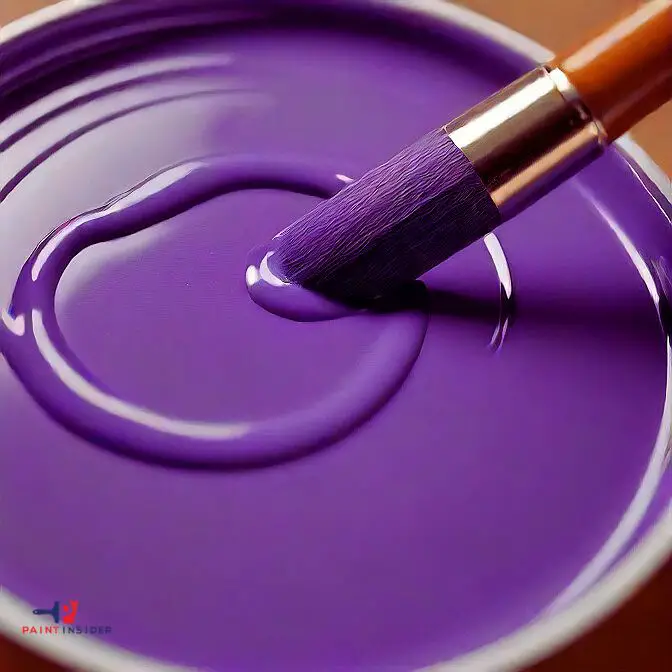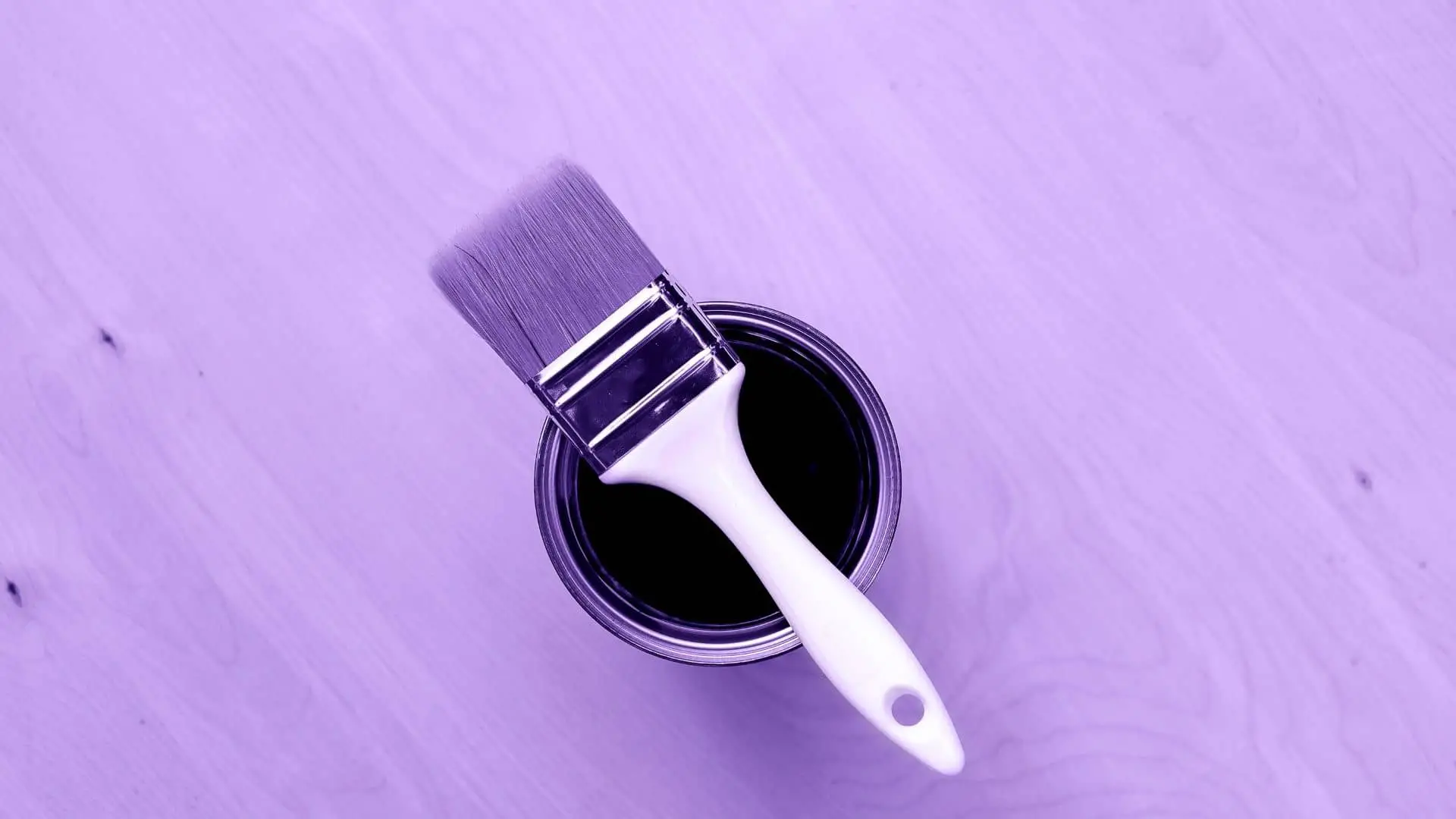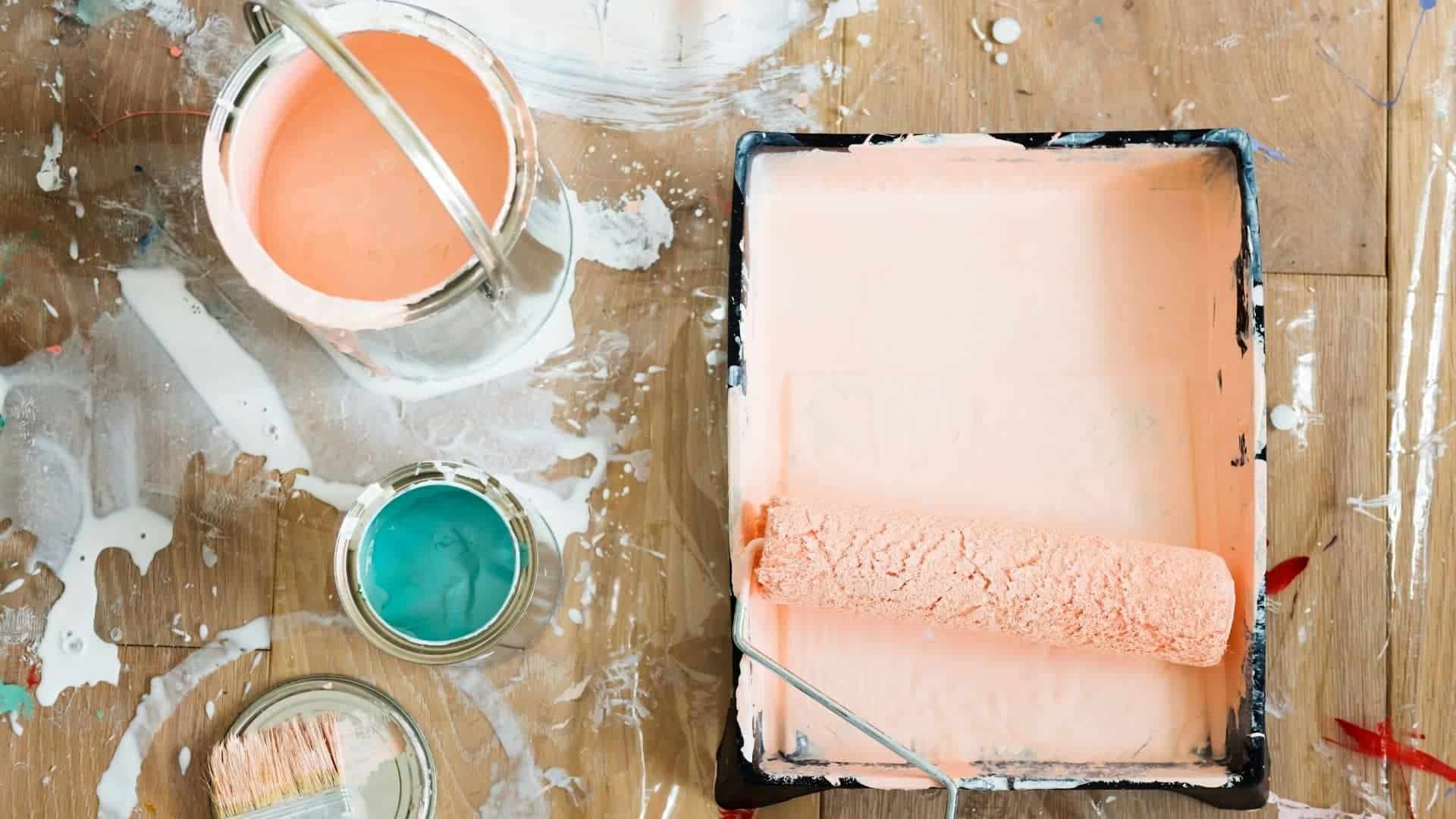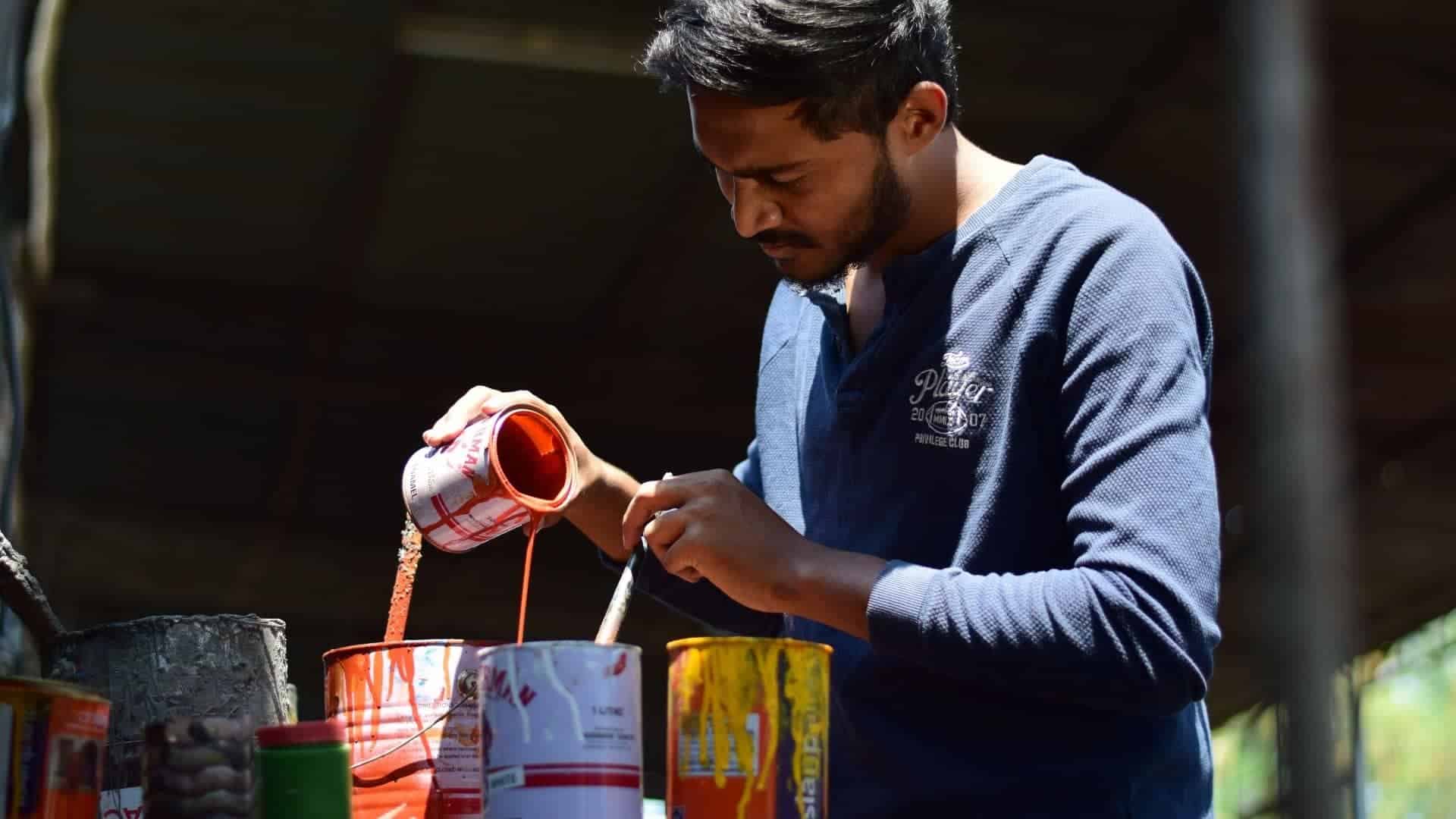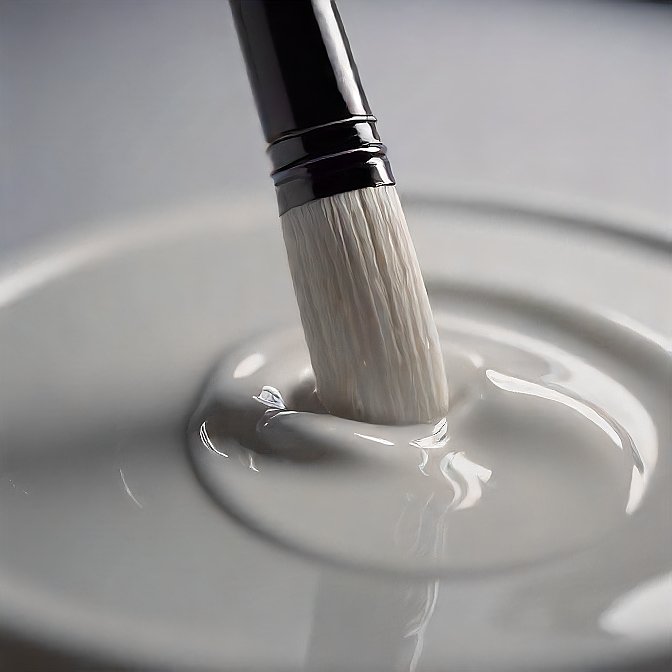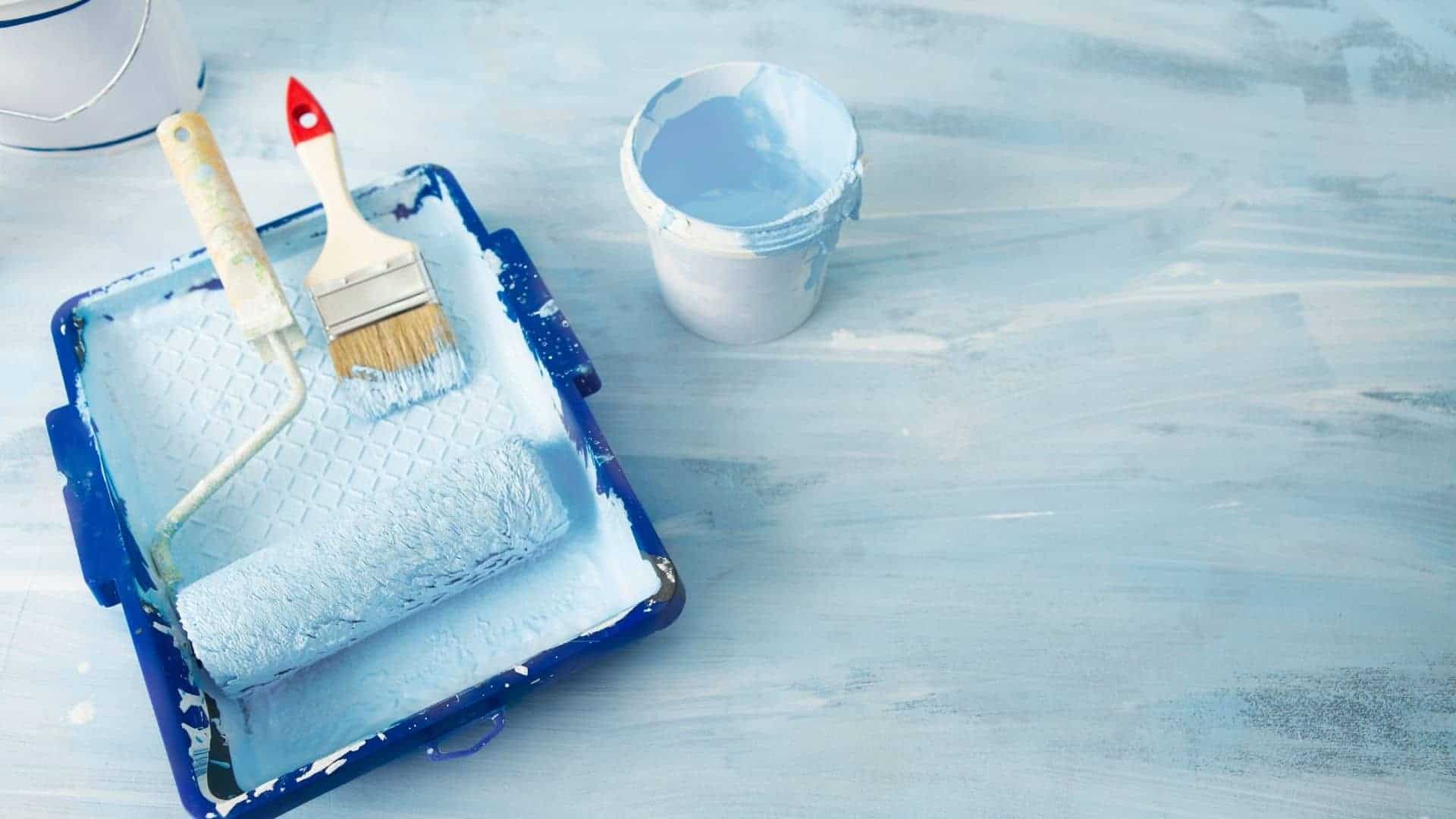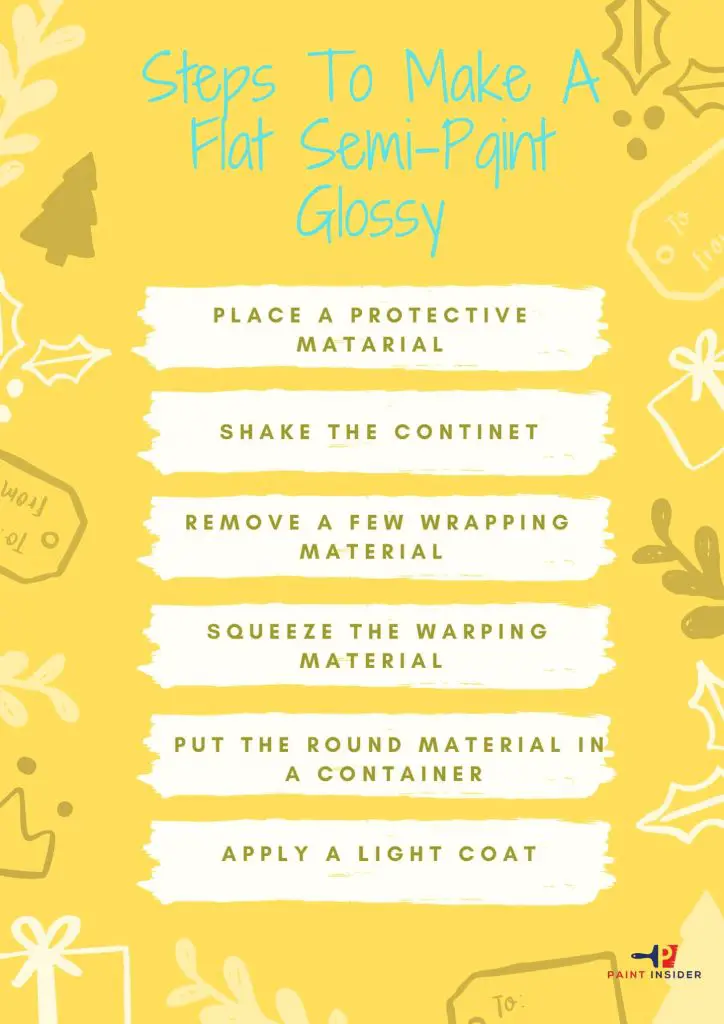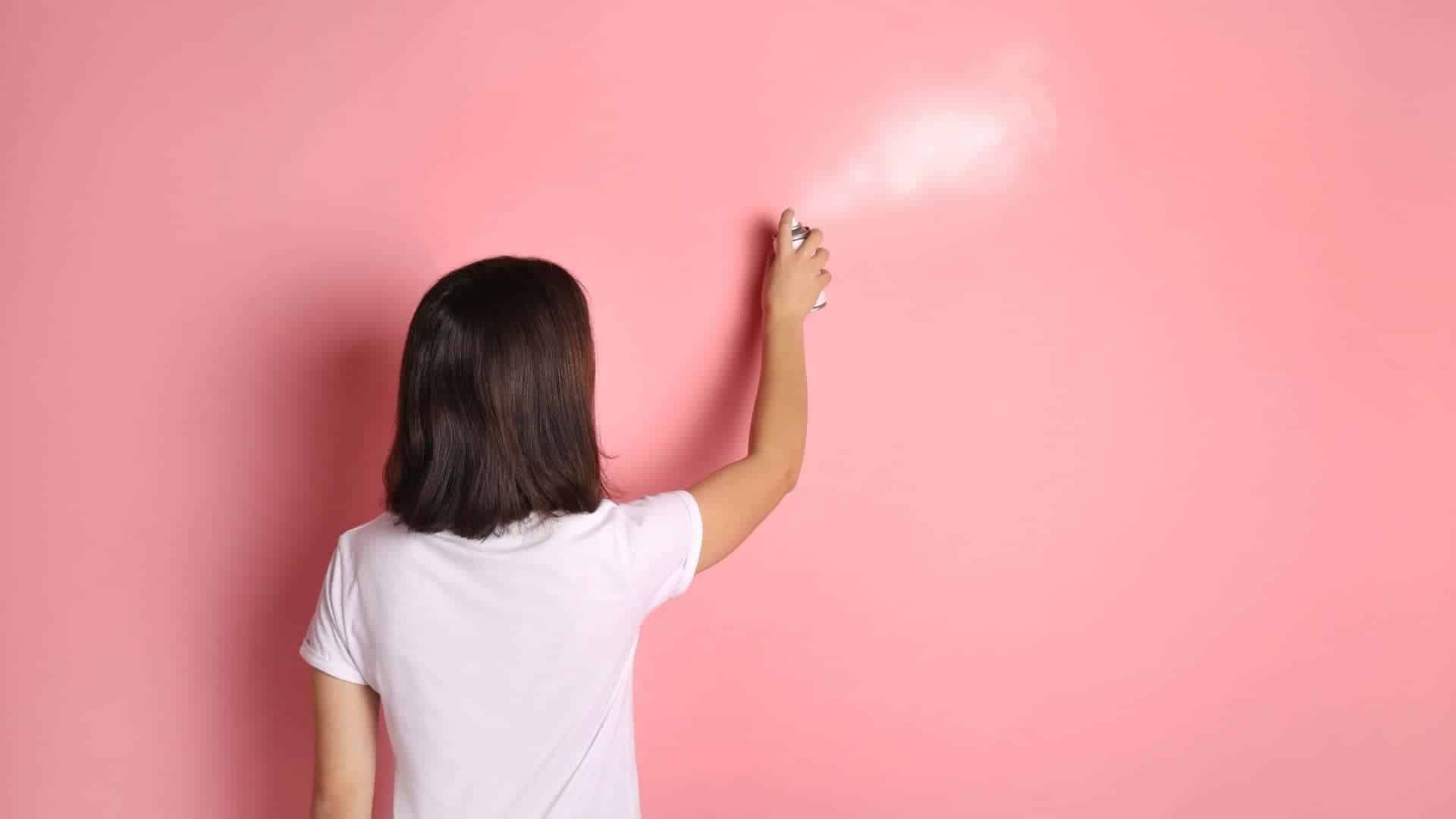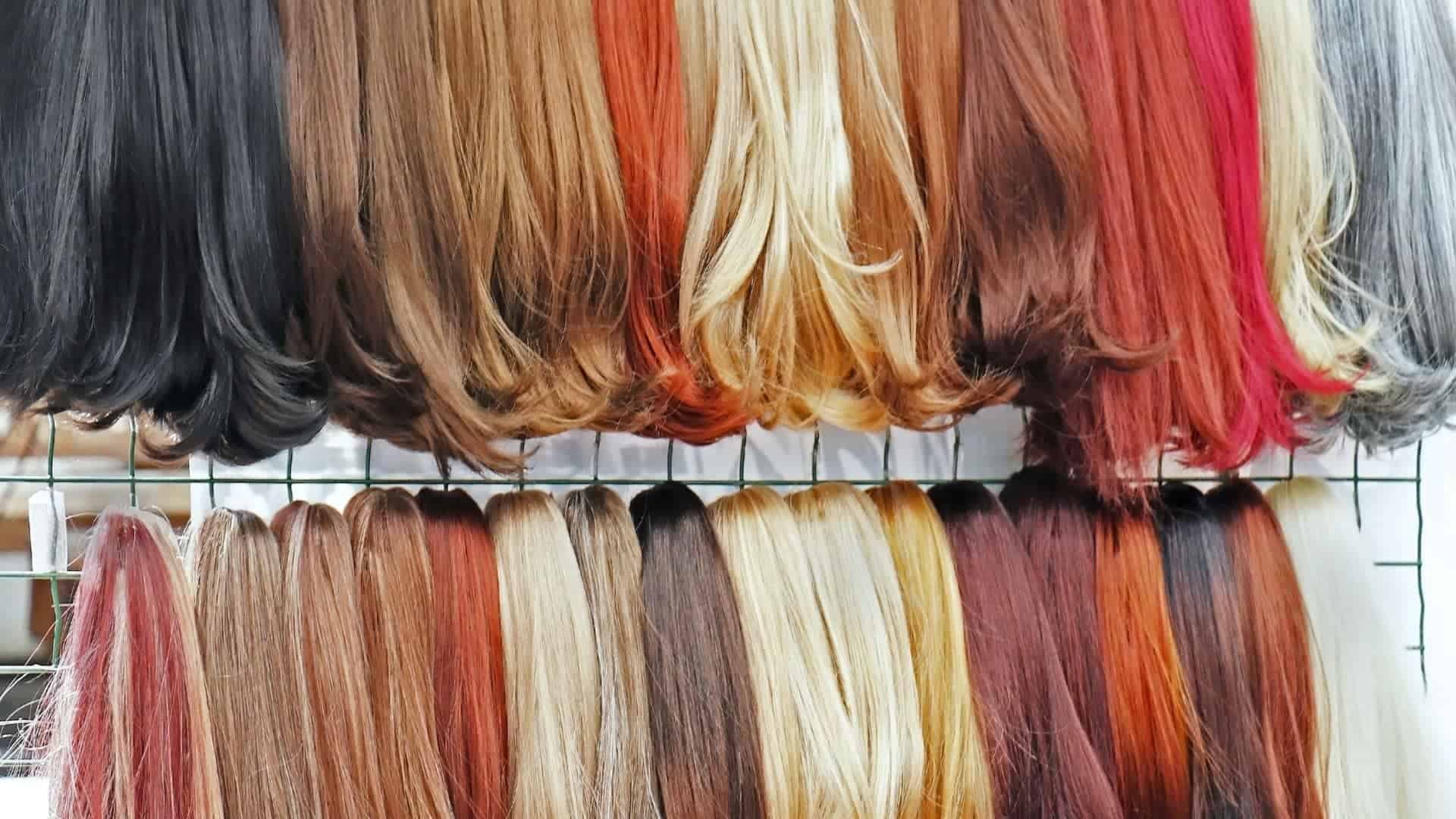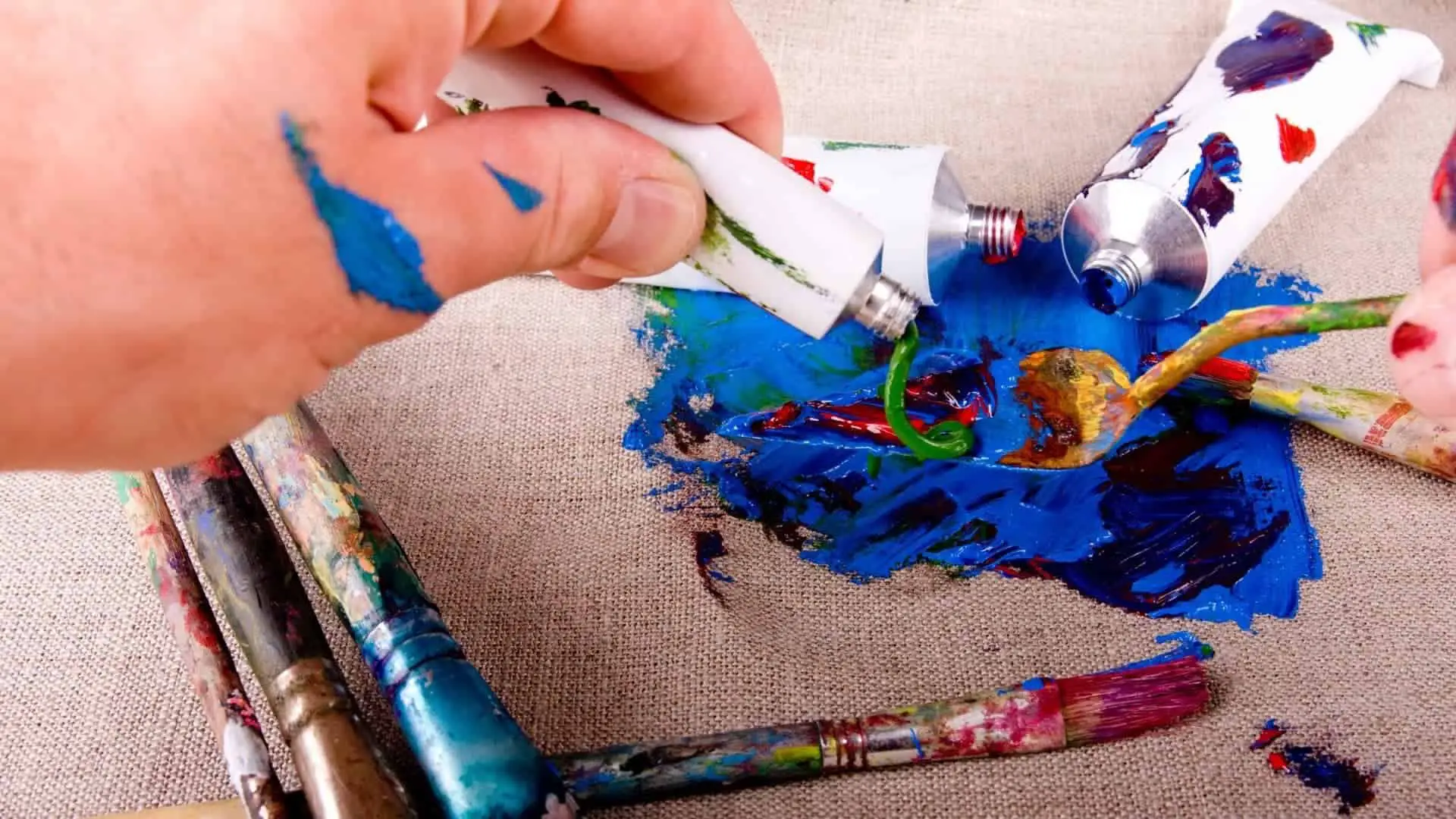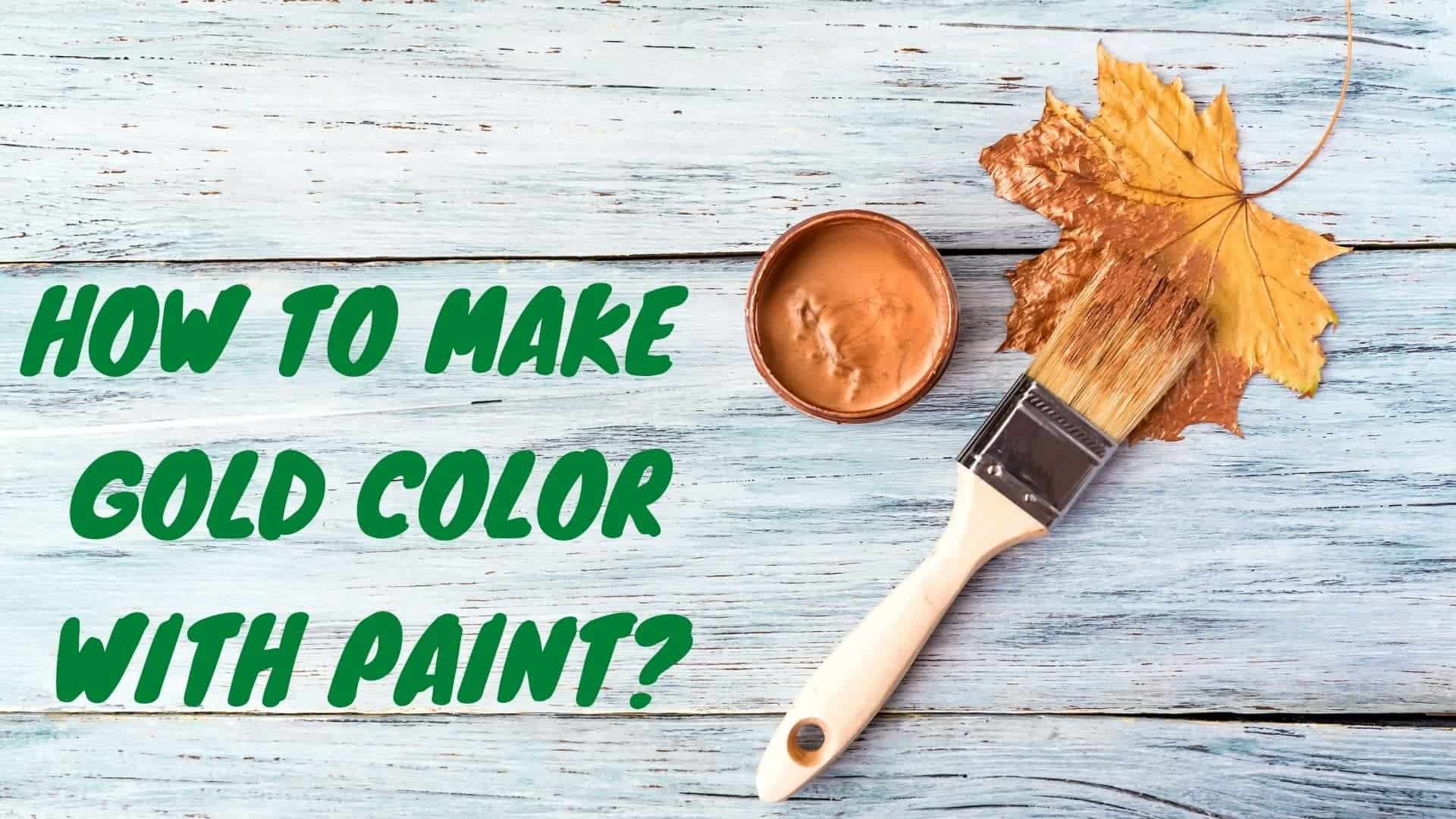Spray paints offer beautiful finishes, but you may not be happy with your paint if it has a sticky feel unto it, so here we’ll share some tips on how to make your spray paints non-sticky.
Spray paints will provide you with the desired look if used properly. Most paintings that end up having a sticky or tacky feel unto it, weren’t properly sprayed on and instructions weren’t followed correctly, also, the weather may contribute to such issues as well. Despite the inconveniences spray painting may cause, they remain a favorite to many because of its easy application method, they also can be applied on basically any surface and once you learn the spray-painting techniques, applying it with a perfect finish and without the sticky feel will be simple and easy for you.
Can Sticky Spray Paint Cause Bubbling?
Yes, spray paint bubbling causes can result from using sticky spray paint. When the paint doesn’t adhere properly to the surface, air bubbles can form, leading to a bumpy, uneven finish. It’s important to prep the surface properly and follow the instructions on the spray paint can to avoid bubbling.
Steps To Make Spray Paint Not Sticky
Things you’ll need so your paint won’t feel sticky
- Cleaning products
- Sandpaper
- Primer paint
- Talcum powder
- Baking soda
Step 1 : The Preparation Or Prep Stage
As most of us would like to be able to just simply spray paint on any surface (opens in a new tab)” rel=”noreferrer noopener” class=”ek-link”>spray paint on any surface, that is not recommended. Expert painters say there are a few steps that need to be followed before applying your spray paint and without properly following these steps your spray paint will just peel off. To avoid such a thing from happening, it is necessary to prep any surface before adding your paint and this involves cleaning and sanding.
The prep stage is a must to help create a strong bond to the surface of the object before you start painting, it also creates the durability of the paint so that it may last longer, this will also avoid that sticky feel once you’re finished adding your paint. These are known as basic techniques that experts recommend before painting, and once you learn them you will be able to achieve a professional look while doing the painting yourself.
Step 2 : Adding A Primer
A primer can also be considered the first coat of paint. To most people, priming is everything because of its beneficial effects and because it also provides you with the perfect finish you may be looking for. Primers will create a smooth surface for your spray paint to be applied to and will bring out the color of the chosen paint. It will also create a strong adhesion by providing a base for the paint to adhere to. If used properly, you will be able to avoid that sticky feel of the paint once it’s added.
One of the ways to avoid your paint from feeling sticky is to allow enough time for the paint to dry in between coats, otherwise, the paint may become too heavy and can take several days or weeks for it to properly dry or cure. Also, avoid using heavy coats or thick coats as this increases drying time and when choosing your primer, make sure it’s compatible with the type of surface you’re painting for better results. Adding a primer has a lot of benefits but if it sounds like a bit of work to do and may take a lot of time, in this case, you can choose a spray paint that already includes a primer and save up some time. These types of paints are also known as dual paints or paint plus primer, they will allow you to paint and prime at the same time and get the same type of protection for your paint.
Step 3 : Using Your Spray Paint Properly
This step will ensure a smooth finish and avoid a sticky feel. You use your spray paint correctly by shaking it properly so that the paint may mix well with the propellant before using, many people tend to fail to do this step. The propellant is what helps distribute the product all over the surface once the can is shaken well assisted by the mixing bearing contained in it. Failing to do this will cause the propellant to be sprayed out and not the actual paint leaving you with a sticky surface which is not good. Once you’ve shaken your spray can well, and started using it, the proper viscosity of the paint will be sprayed out and this will ensure your paint dries properly without feeling sticky.
Also, make sure you allow enough time for your primer to dry properly before applying your topcoats, this is to avoid excessive coats of paint which may cause paint to take longer to dry plus that unwanted sticky feel. It’s also is recommended to shake your spray can for at least 20 seconds so that the paint may have the proper texture when drying and allow it to dry properly in between coats. Also check on the weather conditions, as humidity can cause paint to take longer to dry.
Step 4 : Fixing A Sticky Paint
If you already added your spray paint, and it’s been several days or weeks since you’ve added it, and your paint is still sticky, there are some easy steps you can follow to fix the issue. First of all, it is recommended to allow enough time for the paint to dry which can take days or weeks, for this, it is advised to actually read the instructions on the container for proper timing. Sometimes the best solution is to give it some time.
The next option would be to try some talcum powder. Talcum powder is known as a mineral that absorbs moisture which is why it is normally recommended to use on tacky paints. To use, sprinkle some talcum onto the affected area then use your hands to rub the talcum into the paint until paint no longer feels sticky, repeat if necessary. Although this option may remove some shine from your surface.
Another way to fix sticky paints is to use baking soda. Add the baking soda to the affected area and use your hands to rub it into the surface of the object. Try wiping off excess with a damp cloth and allow to dry. If stickiness persists, add some more baking soda then use a paper towel to clean off excess then add another coat of the paint to the surface then allow to dry and your paint should no longer feel sticky. We hope you find these tips helpful.
<!– /wp:paragraph –Another way to
fix sticky paints is to use baking sodaify”} –>
Spray paints offer beautiful finishes, but you may not be happy with your paint if it has a sticky feel unto it, so here we’ll share some tips on how to make your spray paints non-sticky.
Spray paints will provide you with the desired look if used properly. Most paintings that end up having a sticky or tacky feel unto it, weren’t properly sprayed on and instructions weren’t followed correctly, also, the weather may contribute to such issues as well. Despite the inconveniences spray painting may cause, they remain a favorite to many because of its easy application method, they also can be applied on basically any surface and once you learn the spray-painting techniques, applying it with a perfect finish and without the sticky feel will be simple and easy for you.
Steps To Make Spray Paint Not Sticky
Things you’ll need so your paint won’t feel sticky
- Cleaning products
- Sandpaper
- Primer paint
- Talcum powder
- Baking soda
Step 1 : The Preparation Or Prep Stage
As most of us would like to be able to just simply spray paint on any surface, that is not recommended. Expert painters say there are a few steps that need to be followed before applying your spray paint and without properly following these steps your spray paint will just peel off. To avoid such a thing from happening, it is necessary to prep any surface before adding your paint and this involves cleaning and sanding.
The prep stage is a must to help create a strong bond to the surface of the object before you start painting, it also creates the durability of the paint so that it may last longer, this will also avoid that sticky feel once you’re finished adding your paint. These are known as basic techniques that experts recommend before painting, and once you learn them you will be able to achieve a professional look while doing the painting yourself.
Step 2 : Adding A Primer
A primer can also be considered the first coat of paint. To most people, priming is everything because of its beneficial effects and because it also provides you with the perfect finish you may be looking for. Primers will create a smooth surface for your spray paint to be applied to and will bring out the color of the chosen paint. It will also create a strong adhesion by providing a base for the paint to adhere to. If used properly, you will be able to avoid that sticky feel of the paint once it’s added.
One of the ways to avoid your paint from feeling sticky is to allow enough time for the paint to dry in between coats, otherwise, the paint may become too heavy and can take several days or weeks for it to properly dry or cure. Also, avoid using heavy coats or thick coats as this increases drying time and when choosing your primer, make sure it’s compatible with the type of surface you’re painting for better results. Adding a primer has a lot of benefits but if it sounds like a bit of work to do and may take a lot of time, in this case, you can choose a spray paint that already includes a primer and save up some time. These types of paints are also known as dual paints or paint plus primer, they will allow you to paint and prime at the same time and get the same type of protection for your paint.
Step 3 : Using Your Spray Paint Properly
This step will ensure a smooth finish and avoid a sticky feel. You use your spray paint correctly by shaking it properly so that the paint may mix well with the propellant before using, many people tend to fail to do this step. The propellant is what helps distribute the product all over the surface once the can is shaken well assisted by the mixing bearing contained in it. Failing to do this will cause the propellant to be sprayed out and not the actual paint leaving you with a sticky surface which is not good. Once you’ve shaken your spray can well, and started using it, the proper viscosity of the paint will be sprayed out and this will ensure your paint dries properly without feeling sticky.
Also, make sure you allow enough time for your primer to dry properly before applying your topcoats, this is to avoid excessive coats of paint which may cause paint to take longer to dry plus that unwanted sticky feel. It’s also is recommended to shake your spray can for at least 20 seconds so that the paint may have the proper texture when drying and allow it to dry properly in between coats. Also check on the weather conditions, as humidity can cause paint to take longer to dry.
Step 4 : Fixing A Sticky Paint
If you already added your spray paint, and it’s been several days or weeks since you’ve added it, and your paint is still sticky, there are some easy steps you can follow to fix the issue. First of all, it is recommended to allow enough time for the paint to dry which can take days or weeks, for this, it is advised to actually read the instructions on the container for proper timing. Sometimes the best solution is to give it some time.
The next option would be to try some talcum powder. Talcum powder is known as a mineral that absorbs moisture which is why it is normally recommended to use on tacky paints. To use, sprinkle some talcum onto the affected area then use your hands to rub the talcum into the paint until paint no longer feels sticky, repeat if necessary. Although this option may remove some shine from your surface.
Another way to fix sticky paints is to use baking soda. Add the baking soda to the affected area and use your hands to rub it into the surface of the object. Try wiping off excess with a damp cloth and allow to dry. If stickiness persists, add some more baking soda then use a paper towel to clean off excess then add another coat of the paint to the surface then allow to dry and your paint should no longer feel sticky. We hope you find these tips helpful.
<!– /wp:paragraph –Another
way to fix sticky paints is to use baking sodaify”} –>
Spray paints offer beautiful finishes, but you may not be happy with your paint if it has a sticky feel unto it, so here we’ll share some tips on how to make your spray paints non-sticky.
Spray paints will provide you with the desired look if used properly. Most paintings that end up having a sticky or tacky feel unto it, weren’t properly sprayed on and instructions weren’t followed correctly, also, the weather may contribute to such issues as well. Despite the inconveniences spray painting may cause, they remain a favorite to many because of its easy application method, they also can be applied on basically any surface and once you learn the spray-painting techniques, applying it with a perfect finish and without the sticky feel will be simple and easy for you.
Can Sticky Spray Paint Cause Bubbling?
Yes, spray paint bubbling causes can result from using sticky spray paint. When the paint doesn’t adhere properly to the surface, air bubbles can form, leading to a bumpy, uneven finish. It’s important to prep the surface properly and follow the instructions on the spray paint can to avoid bubbling.
Steps To Make Spray Paint Not Sticky
Things you’ll need so your paint won’t feel sticky
- Cleaning products
- Sandpaper
- Primer paint
- Talcum powder
- Baking soda
Step 1 : The Preparation Or Prep Stage
As most of us would like to be able to just simply spray paint on any surface, that is not recommended. Expert painters say there are a few steps that need to be followed before applying your spray paint and without properly following these steps your spray paint will just peel off. To avoid such a thing from happening, it is necessary to prep any surface before adding your paint and this involves cleaning and sanding.
The prep stage is a must to help create a strong bond to the surface of the object before you start painting, it also creates the durability of the paint so that it may last longer, this will also avoid that sticky feel once you’re finished adding your paint. These are known as basic techniques that experts recommend before painting, and once you learn them you will be able to achieve a professional look while doing the painting yourself.
Step 2 : Adding A Primer
A primer can also be considered the first coat of paint. To most people, priming is everything because of its beneficial effects and because it also provides you with the perfect finish you may be looking for. Primers will create a smooth surface for your spray paint to be applied to and will bring out the color of the chosen paint. It will also create a strong adhesion by providing a base for the paint to adhere to. If used properly, you will be able to avoid that sticky feel of the paint once it’s added.
One of the ways to avoid your paint from feeling sticky is to allow enough time for the paint to dry in between coats, otherwise, the paint may become too heavy and can take several days or weeks for it to properly dry or cure. Also, avoid using heavy coats or thick coats as this increases drying time and when choosing your primer, make sure it’s compatible with the type of surface you’re painting for better results. Adding a primer has a lot of benefits but if it sounds like a bit of work to do and may take a lot of time, in this case, you can choose a spray paint that already includes a primer and save up some time. These types of paints are also known as dual paints or paint plus primer, they will allow you to paint and prime at the same time and get the same type of protection for your paint.
Step 3 : Using Your Spray Paint Properly
This step will ensure a smooth finish and avoid a sticky feel. You use your spray paint correctly by shaking it properly so that the paint may mix well with the propellant before using, many people tend to fail to do this step. The propellant is what helps distribute the product all over the surface once the can is shaken well assisted by the mixing bearing contained in it. Failing to do this will cause the propellant to be sprayed out and not the actual paint leaving you with a sticky surface which is not good. Once you’ve shaken your spray can well, and started using it, the proper viscosity of the paint will be sprayed out and this will ensure your paint dries properly without feeling sticky.
Also, make sure you allow enough time for your primer to dry properly before applying your topcoats, this is to avoid excessive coats of paint which may cause paint to take longer to dry plus that unwanted sticky feel. It’s also is recommended to shake your spray can for at least 20 seconds so that the paint may have the proper texture when drying and allow it to dry properly in between coats. Also check on the weather conditions, as humidity can cause paint to take longer to dry.
Step 4 : Fixing A Sticky Paint
If you already added your spray paint, and it’s been several days or weeks since you’ve added it, and your paint is still sticky, there are some easy steps you can follow to fix the issue. First of all, it is recommended to allow enough time for the paint to dry which can take days or weeks, for this, it is advised to actually read the instructions on the container for proper timing. Sometimes the best solution is to give it some time.
The next option would be to try some talcum powder. Talcum powder is known as a mineral that absorbs moisture which is why it is normally recommended to use on tacky paints. To use, sprinkle some talcum onto the affected area then use your hands to rub the talcum into the paint until paint no longer feels sticky, repeat if necessary. Although this option may remove some shine from your surface.
Another way to fix sticky paints is to use baking soda. Add the baking soda to the affected area and use your hands to rub it into the surface of the object. Try wiping off excess with a damp cloth and allow to dry. If stickiness persists, add some more baking soda then use a paper towel to clean off excess then add another coat of the paint to the surface then allow to dry and your paint should no longer feel sticky. We hope you find these tips helpful.
<!– /wp:paragraph –Another way to
fix sticky paints is to use baking sodaify”} –>
Spray paints offer beautiful finishes, but you may not be happy with your paint if it has a sticky feel unto it, so here we’ll share some tips on how to make your spray paints non-sticky.
Spray paints will provide you with the desired look if used properly. Most paintings that end up having a sticky or tacky feel unto it, weren’t properly sprayed on and instructions weren’t followed correctly, also, the weather may contribute to such issues as well. Despite the inconveniences spray painting may cause, they remain a favorite to many because of its easy application method, they also can be applied on basically any surface and once you learn the spray-painting techniques, applying it with a perfect finish and without the sticky feel will be simple and easy for you.
Steps To Make Spray Paint Not Sticky
Things you’ll need so your paint won’t feel sticky
- Cleaning products
- Sandpaper
- Primer paint
- Talcum powder
- Baking soda
Step 1 : The Preparation Or Prep Stage
As most of us would like to be able to just simply spray paint on any surface, that is not recommended. Expert painters say there are a few steps that need to be followed before applying your spray paint and without properly following these steps your spray paint will just peel off. To avoid such a thing from happening, it is necessary to prep any surface before adding your paint and this involves cleaning and sanding.
The prep stage is a must to help create a strong bond to the surface of the object before you start painting, it also creates the durability of the paint so that it may last longer, this will also avoid that sticky feel once you’re finished adding your paint. These are known as basic techniques that experts recommend before painting, and once you learn them you will be able to achieve a professional look while doing the painting yourself.
Step 2 : Adding A Primer
A primer can also be considered the first coat of paint. To most people, priming is everything because of its beneficial effects and because it also provides you with the perfect finish you may be looking for. Primers will create a smooth surface for your spray paint to be applied to and will bring out the color of the chosen paint. It will also create a strong adhesion by providing a base for the paint to adhere to. If used properly, you will be able to avoid that sticky feel of the paint once it’s added.
One of the ways to avoid your paint from feeling sticky is to allow enough time for the paint to dry in between coats, otherwise, the paint may become too heavy and can take several days or weeks for it to properly dry or cure. Also, avoid using heavy coats or thick coats as this increases drying time and when choosing your primer, make sure it’s compatible with the type of surface you’re painting for better results. Adding a primer has a lot of benefits but if it sounds like a bit of work to do and may take a lot of time, in this case, you can choose a spray paint that already includes a primer and save up some time. These types of paints are also known as dual paints or paint plus primer, they will allow you to paint and prime at the same time and get the same type of protection for your paint.
Step 3 : Using Your Spray Paint Properly
This step will ensure a smooth finish and avoid a sticky feel. You use your spray paint correctly by shaking it properly so that the paint may mix well with the propellant before using, many people tend to fail to do this step. The propellant is what helps distribute the product all over the surface once the can is shaken well assisted by the mixing bearing contained in it. Failing to do this will cause the propellant to be sprayed out and not the actual paint leaving you with a sticky surface which is not good. Once you’ve shaken your spray can well, and started using it, the proper viscosity of the paint will be sprayed out and this will ensure your paint dries properly without feeling sticky.
Also, make sure you allow enough time for your primer to dry properly before applying your topcoats, this is to avoid excessive coats of paint which may cause paint to take longer to dry plus that unwanted sticky feel. It’s also is recommended to shake your spray can for at least 20 seconds so that the paint may have the proper texture when drying and allow it to dry properly in between coats. Also check on the weather conditions, as humidity can cause paint to take longer to dry.
Step 4 : Fixing A Sticky Paint
If you already added your spray paint, and it’s been several days or weeks since you’ve added it, and your paint is still sticky, there are some easy steps you can follow to fix the issue. First of all, it is recommended to allow enough time for the paint to dry which can take days or weeks, for this, it is advised to actually read the instructions on the container for proper timing. Sometimes the best solution is to give it some time.
The next option would be to try some talcum powder. Talcum powder is known as a mineral that absorbs moisture which is why it is normally recommended to use on tacky paints. To use, sprinkle some talcum onto the affected area then use your hands to rub the talcum into the paint until paint no longer feels sticky, repeat if necessary. Although this option may remove some shine from your surface.
Another way to fix sticky paints is to use baking soda. Add the baking soda to the affected area and use your hands to rub it into the surface of the object. Try wiping off excess with a damp cloth and allow to dry. If stickiness persists, add some more baking soda then use a paper towel to clean off excess then add another coat of the paint to the surface then allow to dry and your paint should no longer feel sticky. We hope you find these tips helpful.
